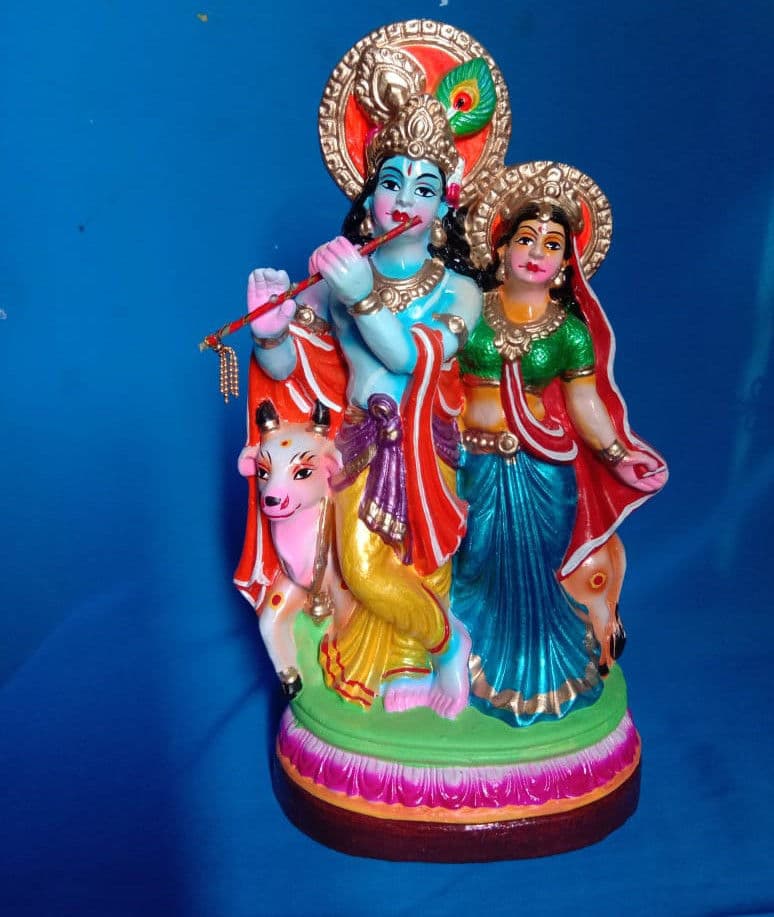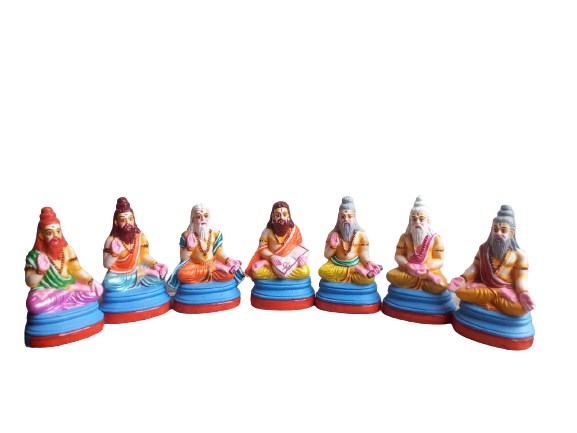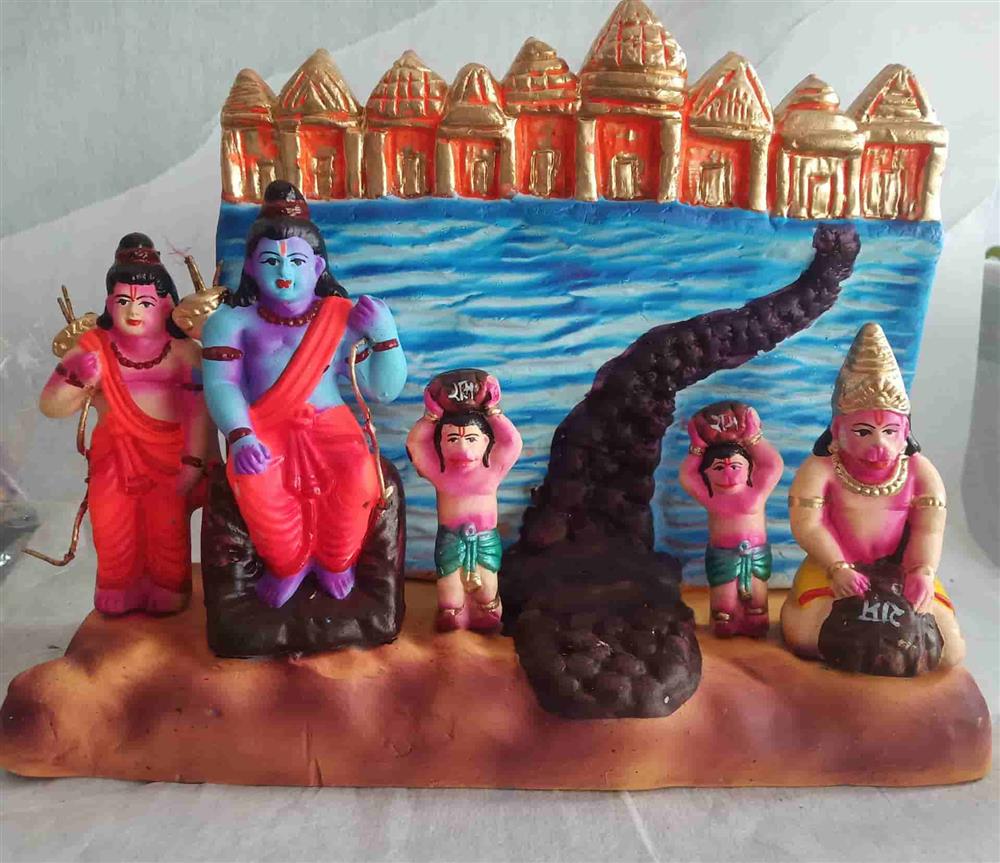Navaratri is a major festival of the Hindus that is celebrated in various styles all over the country every year. Different states of the country have different names and customs for celebrating this festival. In South India, it's called Bombe Habba in Kannada, Bommala Koluvu in Telugu, or Dasara Dolls in general. Navaratri is a Hindu festival that spans nine nights (and ten days) and is celebrated every year in the autumn. In the eastern and northeastern states of India, the Durga Puja is synonymous with Navaratri, wherein goddess Durga battles and emerges victorious over the buffalo demon to help restore Dharma. In the northern and western states, the festival is synonymous with "Rama Lila" and Dussehra that celebrates the battle and victory of god Rama over the demon king Ravana. In southern states, the victory of different goddesses, of Rama or Saraswati is celebrated. In all cases, the common theme is the battle and victory of Good over Evil based on a regionally famous epic.
On the Amavasya day, Golu steps are to be set preferably facing the east direction. We can also keep the steps facing west or north, but never facing south.
Ayudha Pooja, the 9th day of the festival is wherein people pay their respects to the many implements they use. Vehicles and utensils are washed and decorated and also on this day Saraswati Puja, a special puja is offered to the goddess Saraswati, the divine source of wisdom and enlightenment. Books and musical instruments are placed in the puja and worshipped as a source of knowledge.
Vijayadashami is observed for different reasons and celebrated differently in various parts of the Indian subcontinent. In the southern, eastern, northeastern, and some northern states of India, Vijayadashami marks the end of Durga Puja, remembering goddess Durga's victory over the buffalo demon Mahishasura to restore and protect dharma. In the northern, central, and western states, the festival is synonymously called Dussehra (also spelled Dasara, Dashahara). In these regions, it marks the end of "Ramlila" and remembers God Rama's victory over the Ravan. On the very same occasion, Arjuna alone decimated more than 1,000,000 soldiers and defeated all Kuru warriors including Bhishma, Drona, Ashwatthama, Karna, and Kripa, a significant example of the victory of good (Dharma) over evil (Adharma).
Golu Dolls

Krishna, the avatar of Lord Vishnu, is the most celebrated and most talked among all the Hindu gods. He was notorious for his love for butter and gopis (milkmaids), but nothing can ever be compared with his love for his childhood friend Radha. Click here to buy Radha Krishna Golu Doll.
Saptarshi Golu Dolls

The Saptarishi, a Sanskrit dvigu meaning "seven sages") are the seven rishis in ancient India, who are extolled at many places in the Vedas and other Hindu literature. The Vedic Samhitas never enumerate these rishis by name, though later Vedic texts such as the Brahmanas and Upanisads do so. They are regarded in the Vedas as the patriarchs of the Vedic religion. Include our Saptharshi Dolls to your Golu Dolls collections now!.
Rama Sethu Golu Dolls

The ancient Rama Sethu constructed by Lord Rama with the help of his Vanara army to reach Sri Lanka and rescue his wife Sita from the Demon Ravana. Buy this iconic Rama Sethu Golu Doll from our Online Store.
The significance and making of Golu Dolls:
We keep golu during Navaratri to show our, gratitude to the Gods, Goddesses, our gurus, and all-natural elements such as birds, animals, trees, flowers, etc. These dolls, made from natural materials such as wood, clay, terracotta, and cloth, are painted with bright natural dyes and colors. They are made by carving wood or molding clay with bare hands. The material, craft, technique and appearance depend on locally available materials, geography, and craftsmen. Some notable examples of golu dolls are Tanjore dolls from Tamil Nadu, Kondapalli dolls from Andra Pradesh, Chennapattna dolls from Karnataka, clay dolls from West Bengal, etc. Fortunately, these crafts have survived well with constant innovation since golu is still a widely practiced festival. Children recite slokas, sing songs, and eat special dishes offered to the gods, especially the protein-rich dish called sundal (which is made of legumes) with some sweets and fruits.
Arrangement and Golu Steps
Once the site is chosen, it is given a ritualistic cleaning. Then, the backdrop is readied with garlands, drapes, and paintings, depending on the artistic imagination of the creator and their family. The golu padi can either be built with cartons, boxes, books or bought from shops. The readymade padis are assembled with nuts and screws. Whether readymade or self-made, the padi is assembled with utmost care so that they are stable enough to carry the load of the dolls for the nine-day festival. Once the padi is set up, it is skilfully wrapped with cotton or silk dhotis/saris, usually white in colour, to make the vibrantly colored dolls appear dominant. Every day during prayers silver, bronze or clay lamps are positioned in front of the display, to be lit along with incense sticks.
Celebrate this Navaratri decorating with unique collections of our Golu Dolls. Visit our online store to explore more Golu Dolls.





































